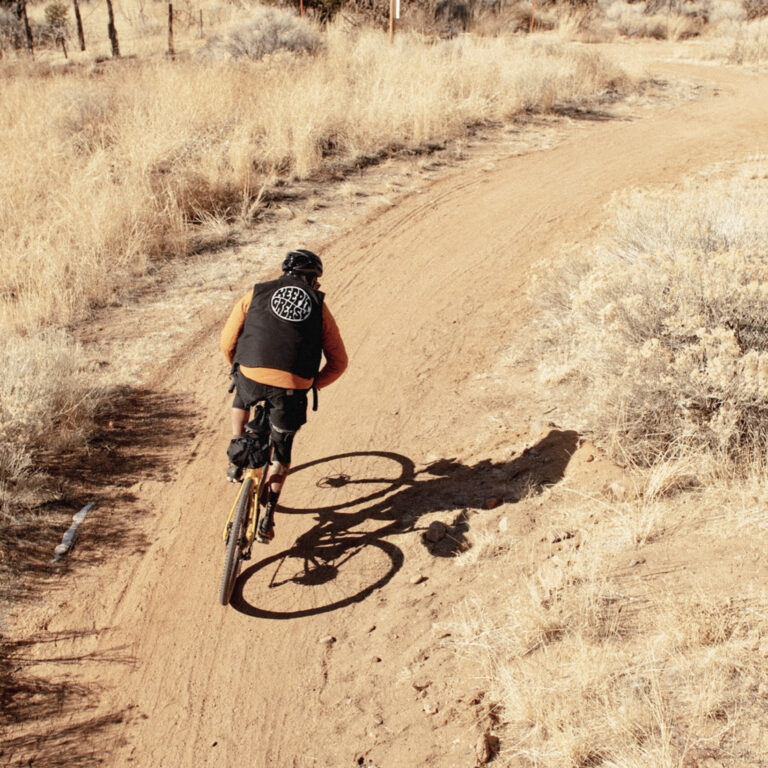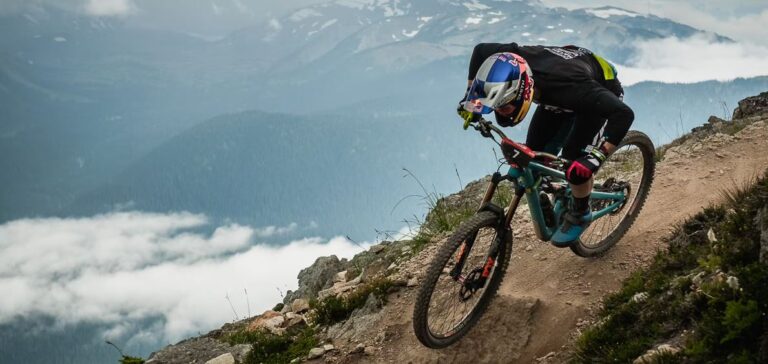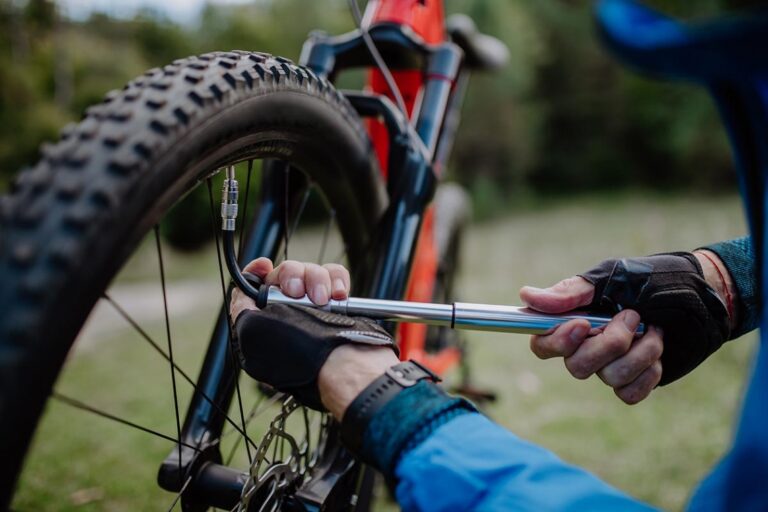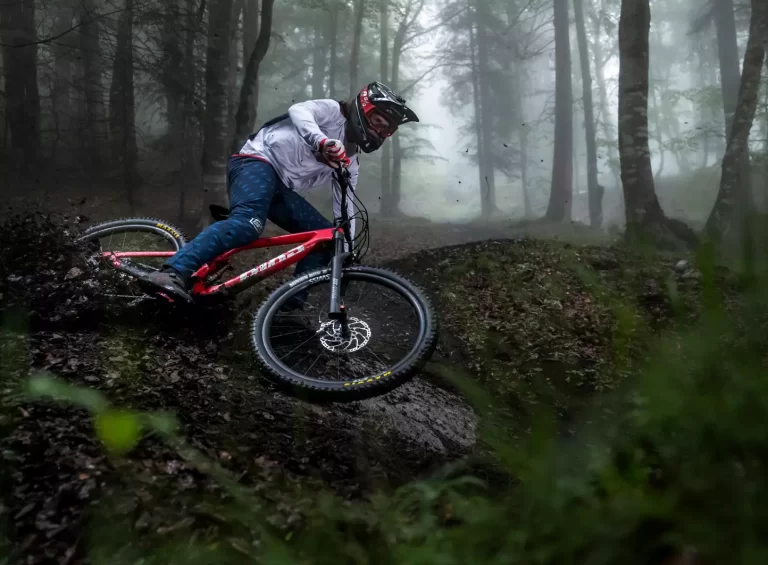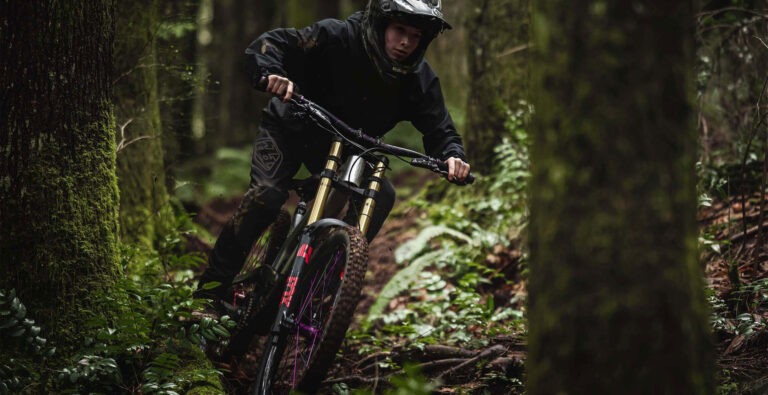Enduro Bike Tire Buyers Guide
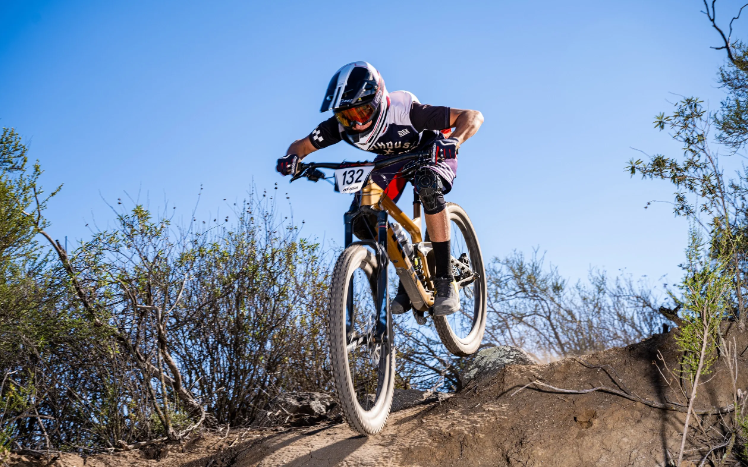
I. Introduction
A. Definition of Enduro Biking
Enduro biking seamlessly combines the thrill of downhill racing with the discipline of cross-country biking. Known for its unique format of untimed uphill and timed downhill stages, it is a discipline that challenges both the rider’s technical skills and endurance. Predominantly, riders navigate through challenging terrains, from rocky paths to forested trails. What you’ll learn in this Enduro Bike Tire Buyers Guide is how to choose the best tires so you can ride fast and efficiently.
B. Importance of Right Tire Selection
When surging through a myriad of terrains, from slick mud to bone-dry deserts, the tires are the sole point of contact between the bike and the ground, acting as the pivotal component for traction, control, and shock absorption. Selecting the appropriate tire is not merely a question of compatibility but a strategic decision that could influence speed, control, and ultimately, the riding experience.
C. Purpose of this Guide
This Enduro Bike Tire Buyers Guide is how to choose the best tires so you can ride fast and efficiently. Tool for both novice and seasoned enduro bikers, elucidating the complexities of tire selection and underscoring pivotal considerations in the context of diverse terrains and riding styles. It seeks to empower readers, providing them with the knowledge to make informed decisions when investing in tires, ensuring not only enhanced performance but also maximized safety and enjoyment on the trails.
II. Understanding Tire Basics

A. Anatomy of a Tire
Every element of a tire, from its visible treads to its concealed casing, is meticulously designed to perform specific functions under varied riding conditions.
1. Tread: The tread, characterized by its patterns and knobs, is crafted to optimize traction and control on diverse terrains. While larger, spaced knobs are tailored for muddy conditions ensuring minimal clogging, smaller, closely-packed knobs favor hardpack terrains, providing a balance of speed and grip.
2. Sidewall: The sidewall is not merely the tire’s face but is crucial for stability and impact resistance. A reinforced sidewall can significantly enhance durability and prevent punctures, especially while navigating through rocky terrains.
3. Bead: The bead, though inconspicuous, plays a critical role in securing the tire onto the rim. While traditional beads are made of steel, contemporary versions often use aramid fibers, ensuring durability while minimizing weight.
4. Casing: The casing, comprising fabric layers under the tread and sidewalls, defines the tire’s structure. A higher thread-per-inch (TPI) indicates a lighter, suppler tire, while a lower TPI implies enhanced durability and puncture resistance.
B. Tire Sizes and Measurements
Understanding the nomenclature and implications of tire sizes and types is fundamental in ensuring compatibility and desired performance.
1. Diameter: Traditionally, enduro bikes embrace tires with a diameter of 27.5 or 29 inches. While the former offers agility and control, the latter is revered for its rolling efficiency and stability over obstacles.
2. Width: Tire width, influencing traction and cushioning, generally ranges from 2.3 to 2.8 inches for enduro bikes. Wider tires, with their increased air volume, provide enhanced grip and shock absorption, albeit at the expense of added weight and rolling resistance.
3. Tube vs. Tubeless: The debate between tube and tubeless setups is shaped by the rider’s preference for reliability against weight efficiency. While tube tires are often simpler to repair, tubeless tires, by preventing pinch flats and enabling lower pressures, provide enhanced traction and a smoother ride over challenging terrains.
III. Factors to Consider When Buying Enduro Bike Tires
A. Terrain Type
Tires are developed with distinct terrains in mind, each designed to maximize performance in specific conditions.
1. Hardpack: For hardpack terrains, go for tires with small, closely spaced knobs, which minimize rolling resistance while still providing adequate grip.
2. Loose Over Hard: For loose-over-hard conditions, a tire with aggressive, sharp-edged, and moderately spaced knobs can penetrate the loose layer to grip the hard surface beneath.
3. Loose: Loose terrains like gravel or sand demand tires with wide-spaced and robust knobs to provide traction by anchoring into the loose material.
4. Mud: For muddy terrains, choose a tire with tall, widely spaced knobs to prevent clogging and ensure optimal grip through the slop.
B. Weather Conditions
Your choice of tire must also account for the weather conditions in your common riding locales.
1. Dry vs. Wet: For dry conditions, a tire with a harder compound and tighter knobs may be optimal. Conversely, wet conditions would warrant wider, softer tires with spaced knobs to dispel mud and water.
2. Hot vs. Cold: In hotter conditions, consider a tire that maintains its hardness at high temperatures. For colder climates, a softer tire can provide better grip as harder compounds may become too stiff.
C. Riding Style
Understanding your riding style is vital in selecting a tire that complements your approach to riding.
1. Aggressive: Aggressive riders might lean towards tires with durable sidewalls and grippy rubber compounds to navigate through challenging terrains.
2. Casual: Casual riders may prioritize comfort and reliability, possibly opting for wider tires with a moderate tread pattern.
3. Competitive: Competitive riders might seek a balance of performance and weight, ensuring rapid acceleration without compromising too much on durability and grip.
D. Budget and Brand
While making purchasing decisions, balancing budgetary constraints with brand reliability is key.
1. Price Range: Determine a budget that aligns with your needs and constraints, ensuring that the selected tire offers the best value within that range.
2. Brand Reputation: Research various brands, considering aspects like their reputation, user reviews, and team sponsorships to gauge their credibility and quality of products.
IV. Key Tire Technologies and Features
A. Rubber Compounds
Different rubber compounds offer varied riding characteristics and longevity.
1. Dual-Compound Rubber: Dual-compound tires utilize two different rubber formulations – a harder compound for the center to reduce wear and a softer compound on the edges to enhance grip in turns.
2. Triple-Compound Rubber: Triple-compound tires take it a step further, offering a medium-density rubber on the base or center, and two progressively softer compounds on the edges to optimize wear and performance.
B. Puncture Protection
Opt for tires with reinforced sidewalls or additional under-tread layers to enhance puncture resistance, which is especially vital for rocky or thorny terrains.
C. Tire Profile and Shape
The tire profile significantly influences cornering and stability. A round profile provides smooth transitioning into turns, while a more squared-off tire offers aggressive cornering abilities and stability.
D. Tread Pattern and Design
In-depth consideration of tread pattern and knob design can optimize performance on specific terrains. A tire with ramped knobs can reduce rolling resistance, while siped knobs can flex and expand upon impact, providing additional grip on slippery surfaces.
V. Best Practices in Tire Maintenance and Care
Ensuring the longevity and optimal performance of your enduro bike tires transcends the point of purchase. Attentive maintenance and care are pivotal in ensuring consistent performance and safety throughout the tire’s lifecycle.
A. Proper Installation
Seamless tire performance begins with accurate installation, warranting meticulous attention to ensure safety and efficacy.
1. Tube Installation: Ensure that the tube is evenly inserted, the tire beads are properly seated, and cautiously inflate to avoid pinching or damaging the tube.
2. Tubeless Installation: For tubeless tires, verify that the tire and rim are compatible, ensure airtight sealing, and utilize a tubeless tire inflator for effective bead seating.
B. Air Pressure Management
Maintaining appropriate air pressure is quintessential in optimizing traction, control, and longevity.
1. Checking and Adjusting Pressure: Regularly check tire pressure using a reliable gauge and adhere to the recommended PSI range stipulated by the tire manufacturer.
2. Pressure Impacts on Performance: Remember that higher pressures optimize rolling efficiency but compromise traction, while lower pressures enhance grip but risk pinch flats and rim damage.
C. Regular Checks and Replacements
Routine checks and timely interventions safeguard against unexpected mishaps during rides.
1. Wear and Tear Assessment: Regularly inspect for visible damages, tread wear, and sidewall integrity to anticipate potential issues.
2. Repairing vs. Replacing: While minor damages might be repairable, excessive wear or significant damages warrant tire replacement to ensure safety and performance.
VI. Reviews and Recommendations
Leveraging reviews and recommendations, you can navigate through the myriad of options available in the market.
A. Top Brands in the Market
Certain brands have cemented their reputation through the consistent delivery of high-quality products.
1. Maxxis: Renowned for its comprehensive range, Maxxis offers tires that effectively cater to varied terrains and riding styles.
2. Schwalbe: Famed for its innovative designs and technologies, Schwalbe provides reliable tires that often pioneer in the incorporation of novel technologies.
3. Michelin: With a robust history in tire manufacturing, Michelin offers a blend of durability and performance.
4. Continental: Continental tires are celebrated for their reliable performance and durability across diverse terrains.
Click Here for our Best Rated Enduro Bike tires
B. Best Tires for Specific Terrains and Conditions
Certain tires stand out in specific terrains, such as Maxxis’s Minion DHR II for loose over hard terrains or Schwalbe’s Magic Mary for muddy conditions.
C. Budget-friendly Options
Identifying budget-friendly options that don’t compromise significantly on performance, such as the Continental Trail King, ensures accessibility for riders with varied budget constraints.
VII. Conclusion
A. Recap
Navigating through the landscape of enduro bike tires encompasses understanding tire anatomy, considering multiple purchasing factors like terrain type and riding style, and ensuring diligent maintenance. Brands like Maxxis and Schwalbe often emerge as popular choices, yet numerous options cater to varied preferences and requirements.
Enduro is one of my favorite Cycling Disciplines and I hope you’ve found this Enduro Bike Tire Buyers Guide useful. Have fun out there.
John
FAQ’s
What Size Tire is Best for Enduro Mountain Bike Racing?
The ideal tire size for enduro mountain bike racing depends on the specific course conditions, rider preference, and other factors. The following are some general considerations:
- Wheel Diameter:
- 29 inches (29er): These are becoming increasingly popular in enduro racing. They roll faster and smoother over rough terrain, offering better momentum and more stability. This size is especially beneficial on high-speed courses or ones with longer descents.
- 27.5 inches (650b): These wheels are slightly more agile and responsive, which can be advantageous on tight and twisty courses. They also might fit better for riders with shorter stature.
- Tire Width:
- 2.3 to 2.5 inches: These are common widths for enduro tires. They provide a good balance of grip, puncture resistance, and rolling efficiency.
- 2.6 inches and wider: These are considered “wide trail” or “plus” tires. They offer more grip and cushion due to a larger contact patch but can be heavier and potentially slower rolling on certain terrains. They are less common in pure enduro racing but are popular for aggressive trail riding.
- Tread Pattern and Rubber Compound:
- Aggressive Treads: For loose, muddy, or technical courses, more aggressive tread patterns are preferred. They offer better grip and stability. Popular enduro tire models often have large, spaced-out knobs.
- Rubber Compound: Softer compounds offer more grip but wear out faster. Some tires offer dual or triple compounds, blending harder rubber in the center for longevity and rolling efficiency with softer rubber on the sides for cornering grip.
- Front and Rear Tire Combination:
- It’s common for enduro riders to use a slightly more aggressive tire on the front for better steering and braking grip, paired with a slightly faster-rolling tire on the rear to optimize pedaling efficiency.
- Casing and Puncture Protection:
- Given the demanding nature of enduro racing, look for tires with reinforced casings and added puncture protection. This can prevent race-ending flats but will add to the tire’s weight.
- Tubeless Setup:
- Most enduro racers use a tubeless setup. This allows riders to run lower pressures without the risk of pinch flats, offering better grip and ride comfort.
Remember, the “best” tire size and setup can vary based on individual preferences, riding style, and specific race conditions. It’s a good idea to test different setups during training to find what feels best for you and to consult with other racers or local experts about the demands of specific courses.
How do I know what bike tire to buy?
Choosing the right bike tire depends on the type of bike you have, the kind of riding you do, and the conditions in which you’ll be riding. Here’s a step-by-step guide to help you determine the right tire for your needs:
- Determine Your Current Tire Size:
- Look at the sidewall of your current tires. The size is usually printed there. It might look something like “700x25c” for a road bike, “29×2.25” for a mountain bike, or “27.5×1.95” for certain hybrid or mountain bikes. The first number is the diameter, and the second is the width.
- Bike Type and Purpose:
- Road Bikes: Designed for pavement, these tires are generally thin with a smooth tread pattern.
- Mountain Bikes: Designed for off-road trails. These tires are wider with aggressive treads.
- Hybrid/Commuter Bikes: These are versatile bikes and can have a range of tire types, from nearly smooth to moderately aggressive tread.
- Touring Bikes: Designed for long-distance riding, these tires are often wider than typical road bike tires and have a more robust construction.
- BMX Bikes: These have smaller, wider tires with a variety of tread patterns based on use (dirt vs. park vs. street).
- Consider Riding Conditions:
- Dry vs. Wet Conditions: If you often ride in wet conditions, consider tires with a tread pattern that sheds water.
- Terrain: For rough or loose terrain, a tire with more aggressive tread is necessary. For smooth surfaces, a tire with minimal tread is more efficient.
- Puncture Risk: If you frequently ride in areas with thorns or sharp debris, consider puncture-resistant tires or those with thicker casings.
- Tire Width:
- Wider tires tend to offer more cushioning (comfort) and grip but might be slower on smooth surfaces due to increased rolling resistance. Thinner tires are usually faster on smooth surfaces but offer less comfort and grip.
- Tread Pattern:
- Smooth: Best for smooth surfaces and road riding.
- Semi-slick: Smooth in the center with some grip on the edges. Good for urban commuting or mixed terrain.
- Inverted Tread: Minimal grip but provides some traction on both pavement and dirt. Suitable for hybrids.
- Knobby: Best for off-road or loose terrain, like mountain biking.
- Rubber Compound:
- Softer rubber provides better grip but tends to wear out faster. Harder rubber lasts longer but might not provide as much traction.
- Casing and Puncture Protection:
- Some tires come with reinforced casings that are more resistant to punctures. This is especially useful for city riding or touring where carrying extra tubes and changing flats can be inconvenient.
- Tube vs. Tubeless:
- Tubed Tires: Most common and uses an inner tube.
- Tubeless Tires: Seals directly to the rim, allowing for lower pressures and reducing the risk of pinch flats. Requires a compatible rim and often some liquid sealant inside the tire.
- Price and Brand Reputation:
- More expensive tires often offer better performance, longevity, or weight savings. However, the law of diminishing returns applies. Research brands and read reviews.
- Consult a Local Bike Shop:
- They can provide recommendations based on your specific needs and the common conditions in your area.
Once you’ve considered all these factors, you’ll be well-equipped to choose the right tire for your bike and riding conditions. Remember, tires wear out, so as your riding style or conditions change, you can always choose a different type of tire the next time around.

